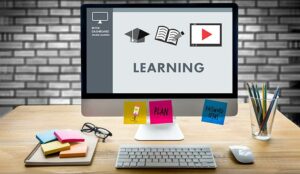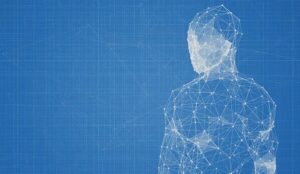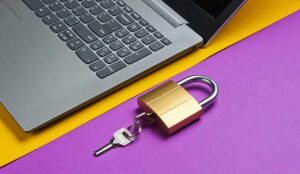Growing From the Pandemic for a More Tech-Enabled Learning Experience
The Covid-19 pandemic forced educators and school districts to rethink how they reached their students; new spaces, schedules, and tools forced everyone to be more flexible in their approach to learning.
For example, our data shows that in the US pre-Covid, only 1% of students were attending online schools and only 10% taking online courses. At the peak of the pandemic, however, about 80% of teachers were teaching remotely.
Moving forward, capturing this newfound flexibility with technology will allow teachers to be more deliberate about how and when they share knowledge, benefitting students through a more personalized learning experience.
After well over a year of pandemic-style work and learning, many are well aware of the in-person/remote dichotomy: you’re either physically there, or you’re not. But when we do our work or learning has also taken on entirely new dimensions during the pandemic.
Synchronous learning is when teachers are giving a lesson to a student in real-time. Asynchronous learning, on the other hand, has traditionally taken the form of homework and reading assignments, where the student is acquiring knowledge in her own time.
Though in the past many have thought of asynchronous learning as remote and synchronous learning as in-person, these assumptions are rapidly changing as we evolve learning models with richer digital learning experiences.
Video Enables Flexible Teaching Models
Emerging technologies allow both students and teachers to be more purposeful about how they use their time. For particularly difficult subjects, teachers now have the ability to pre-record a lecture so that students can listen to it prior to coming into class.
This “flipped” learning enables them to use that synchronous class time to get more one-on-one face time with each individual student. Because of these advancements in video technology, synchronous and asynchronous activities can be curated into a learning experience that is more tailored to student needs.
Analyzing Student Development for Optimized (a)synchronous Learning
Technology also opens up new possibilities for teachers to personalize teaching through enhanced insights into student development. Microsoft Teams has developed the Reading Progress program, which analyzes audio and video recordings of students reading passages selected by the teacher.
The data generated by this program allows teachers to better understand the challenges at both an individual student and class-wide level by tracking metrics like accuracy rate and mispronunciations.
And since students and teachers can record and review the passages when they want, this frees up synchronous learning time to cover more difficult material that may require real-time instruction.
Diving Into a Flexible Future
In this past year, education has undergone some major disruptions. But one thing is certain: technology is opening a variety of new combinations of in-person, remote, synchronous, and asynchronous learning that, if leveraged correctly, will boost the success of both students and teachers and help shape a flexible way of learning fit for a hybrid world.
Author: Guest Author
Published On: 31st Aug 2021
Read more about - Guest Blogs, Jabra




































